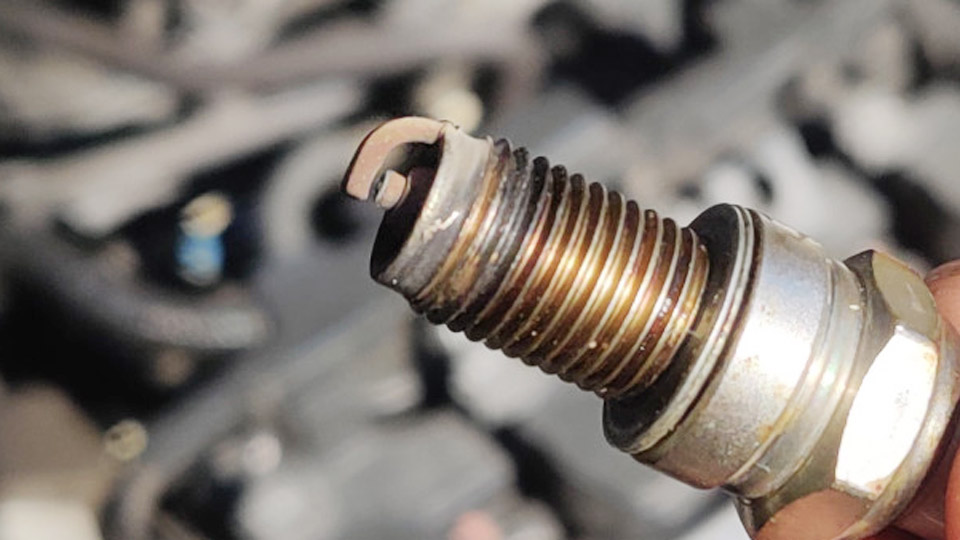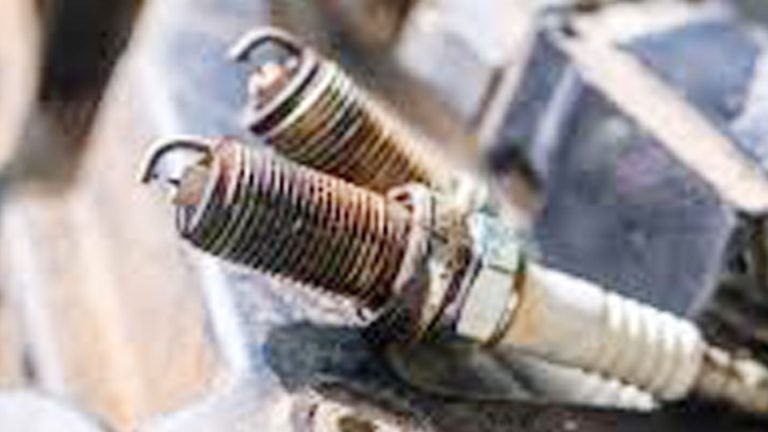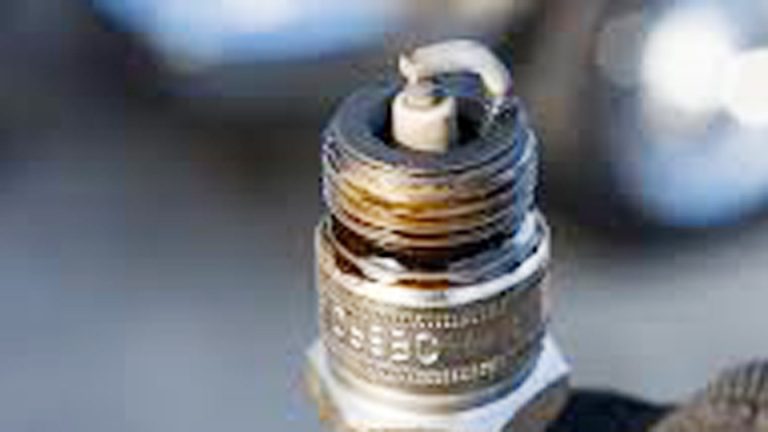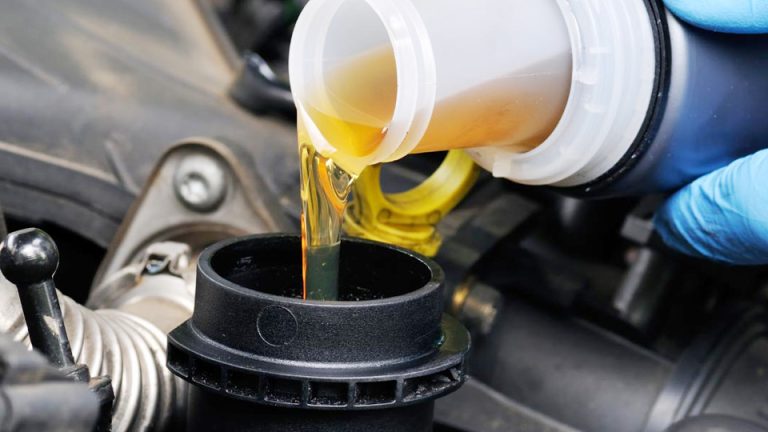You’re cruising down the highway when suddenly the engine hesitates, or maybe your car feels sluggish every time you press the gas. Situations like these often leave drivers scratching their heads, wondering, how to know if my car needs spark plugs? It’s a good question, because spark plugs may be tiny, but they’re responsible for igniting the fuel that keeps your engine running smoothly.
When they start to wear out, performance drops, fuel economy suffers, and sometimes the car won’t start at all. I’ve lost count of how many times I’ve swapped bad plugs for customers and watched their car instantly run smoother—it’s one of those quick fixes that can make a night-and-day difference.

Image by autodeal
What Are Spark Plugs and How Do They Work?
Spark plugs come in different types – copper, platinum, iridium – each with its own lifespan and heat range. Copper ones are cheap but wear fast; iridium lasts longer but costs more. Why does this matter? A mismatched plug can cause detonation or poor combustion, leading to engine knock that I’ve fixed more times than I can count.
In the US, brands like NGK and Denso dominate because they’re OEM for many imports, while ACDelco shines for GM vehicles. I’ve always advised checking your owner’s manual for the right spec – it’s not one-size-fits-all.
Signs Your Car Needs New Spark Plugs
Ever had your car hesitate when accelerating, like it’s choking on something? That’s a classic red flag. From my shop days, I’d say 80% of rough-running engines trace back to plugs. Let’s break down the symptoms so you can diagnose yours without fancy tools.
First off, engine misfires. You’ll feel it as a stutter or jerk, especially under load. I once had a customer with a 2015 Toyota Camry complaining of this – popped the hood, and the plugs were fouled with carbon. A quick swap, and it purred like new.
Rough idling is another big one. If your car shakes at stoplights, check those plugs. Poor fuel economy sneaks up too; worn plugs mean incomplete burns, wasting gas. I’ve tracked my own trucks and seen MPG drop by 2-3 when plugs are due.
Listen for starting troubles. Hard starts in the morning? Could be weak sparks. And that check engine light? Codes like P0300 (random misfire) often point straight to plugs. Grab an OBD-II scanner – cheap ones on Amazon work fine for basics.
When Should You Replace Spark Plugs?
Timing is everything. Most manufacturers recommend every 30,000 to 100,000 miles, depending on the type. For example, older vehicles with copper plugs need changes around 30k, while iridium in modern Hondas can go 100k. But don’t wait for the odometer – driving conditions matter. City stop-and-go wears them faster than highway cruising.
Why replace proactively? Worn plugs stress ignition coils, which I’ve replaced at $50-100 a pop. Plus, better combustion means cleaner emissions and passing smog tests easier in states like California. In my experience, ignoring the interval led to a seized engine in a buddy’s old Jeep – costly lesson.
Check your service schedule, but inspect visually every oil change. Pull one plug; if the electrode’s rounded or gapped wrong, it’s time. Tools? A socket wrench and gap tool are must-haves.
Common Problems with Worn Spark Plugs
Worn plugs don’t just fail quietly. They cause a cascade of issues. Fouling is huge – oil or carbon buildup from rich mixtures. I’ve seen this in high-mileage Subarus where rings are wearing, letting oil sneak in.
Cracked insulators are sneaky; they cause arcing and misfires. Heat damage melts electrodes in turbo engines pushing hard. And pre-ignition? That’s when plugs get too hot, igniting fuel prematurely – bad for pistons.
From the garage, I’d say overheating engines accelerate wear. If you’ve got cooling issues, fix those first or new plugs won’t last.
OEM vs Aftermarket Spark Plugs: Which to Choose?
OEM plugs, like those from Ford or Toyota factories, are designed specifically for your model. They’re reliable, but pricey – think $10-20 each. I’ve used them on warranty jobs to avoid comebacks.
Aftermarket? Brands like Bosch or Champion offer alternatives at half the cost, often with similar performance. But quality varies; some cheapies fail early. For US vehicles, NGK aftermarket plugs are solid for imports, while Autolite works great for domestics.
Here’s a quick comparison:
| Aspect | OEM Spark Plugs | Aftermarket Spark Plugs |
|---|---|---|
| Cost | Higher ($10-20 per plug) | Lower ($5-15 per plug) |
| Compatibility | Perfect fit for your make/model | Good, but check specs |
| Lifespan | Matches factory specs (e.g., 60k-100k miles) | Varies; premium ones match OEM |
| Warranty | Often covered under vehicle warranty | Brand-specific, sometimes shorter |
| Availability | Dealerships or online OEM parts | Auto stores like AutoZone, O’Reilly |
Pros of OEM: Peace of mind, exact heat range. Cons: Overpaying for branding. Aftermarket pros: Savings, options for upgrades (like double platinum). Cons: Risk of fakes or mismatches. I once installed budget aftermarkets in a Chevy Silverado; they gapped wrong out of the box, causing pings.
Best Spark Plug Brands for US Vehicles
In the States, availability is key. NGK is my go-to for Japanese cars – reliable, easy to find at NAPA. For American iron, Champion or ACDelco hold up well. Bosch? Great for Europeans like VWs.
Prices fluctuate: Basic copper around $3-5, iridium $10-15. Compatibility? Always cross-reference with your VIN. For a Ford F-150, OEM Motorcraft plugs are spot-on, but E3 aftermarkets add a performance edge for towing.
Pros and cons: NGK pros – long life, anti-fouling; cons – pricier. Champion: Affordable, but electrode wear faster in hot engines.
How to Identify Genuine vs Fake Spark Plugs
Counterfeits are rampant, especially online. I’ve been burned buying “NGK” plugs that were junk. Look for holograms or serial numbers on packaging. Genuine ones have precise threading; fakes feel rough.
Buy from trusted spots: Dealerships, AutoZone, or direct from brands. Check electrode material – real iridium is shiny, not dull. And packaging: Typos or cheap boxes scream fake.
Tip: Scan the QR code if available; legit ones link to manufacturer sites. Saved a customer $200 when I spotted fakes in his order.
Step-by-Step Guide to Replacing Spark Plugs
Alright, let’s get hands-on. I’ve done this on everything from V6s to inline-fours. Safety first: Disconnect battery, wear gloves, and work on a cool engine to avoid burns.
Step 1: Gather tools – spark plug socket (usually 5/8″ or 13/16″), ratchet, extension, gap tool, anti-seize, torque wrench.
Step 2: Locate plugs – under coil packs or wires. Remove coils (unbolt, unplug).
Step 3: Blow out debris around plugs with compressed air to prevent dirt in cylinders.
Step 4: Loosen and remove old plugs counterclockwise. Inspect them – black soot means rich mix; white, lean.
Step 5: Gap new plugs per spec (e.g., 0.040″ for many). Apply anti-seize to threads, not electrode.
Step 6: Hand-thread new ones to avoid cross-threading, then torque to spec (usually 15-20 ft-lbs).
Step 7: Reinstall coils, reconnect battery, start engine. Listen for smooth idle.
Common mistakes? Over-torquing cracks porcelain. Forgetting anti-seize leads to seized plugs next time. I learned that the hard way on a ’05 Mustang.
Maintenance Tips for Longer Spark Plug Life
Keep ’em lasting: Use quality fuel to avoid deposits. Change air filters regularly – dirty ones cause rich conditions. And monitor ignition system; bad wires accelerate wear.
Inspect every 30k miles. In humid areas like the Southeast, corrosion hits faster – dielectric grease helps.
Pro tip: If you’re tuning up, replace wires or coils too for a full refresh. Saved my old Dodge from repeated misfires.
Personal Stories from the Garage: Real Fixes and Lessons
Back in my mechanic days at a shop in Texas, a guy rolled in with a sputtering Nissan Altima. “It just died on the freeway,” he said. Pulled the plugs – electrodes worn to nubs at 80k miles. Swapped to iridium NGKs, and he drove off grinning. Taught me to always ask about driving habits; he was all city traffic.
Another time, a DIYer brought his Hyundai with self-installed plugs. Wrong gap, causing knocks. We regapped, and poof – fixed. Common question: “Do I need to replace all at once?” Yes, for balance.
Workshop wisdom: Customers often ask, “Why’s my MPG down?” Plugs are usually it. Or “Is this noise plugs?” If it’s rhythmic, maybe.
Upgrading Spark Plugs for Better Performance
Want more pep? Performance plugs like E3 or Pulstar claim better sparks. For a stock Civic, stick basic; for modded Mustangs, iridium upgrades reduce misfires under boost.
In US tuning scenes, folks swear by colder plugs for forced induction. But match heat range or risk fouling. I’ve tested on my project car – noticeable throttle response bump.
Spark Plugs and Fuel Efficiency: What You Need to Know
Worn plugs waste fuel – up to 30% loss in extreme cases. Clean combustion equals better MPG. I’ve logged before/after on a Prius: Gained 4 MPG post-replacement.
For efficiency-focused drivers, platinum or iridium pay off long-term. In gas-guzzling trucks, it’s a no-brainer for savings at the pump.
Dealing with Spark Plug Issues in Older vs Newer Cars
Classics like ’70s muscle cars use basic copper, needing frequent changes. Modern ones with coil-on-plug? Easier access but pricier parts.
In a ’92 Corvette I restored, plugs were buried – took hours. Newer Fusions? 30 minutes tops. Adapt your approach.
Tools Every DIY Mechanic Needs for Spark Plug Jobs
Essentials: Magnetic socket to avoid drops, torque wrench for precision, gapper. Extras: Boot puller for tight spots, dielectric grease.
Safety: Eye protection, gloves. Work ventilated – fumes build up. And chock wheels if jacking.
Conclusion
Wrapping this up, spark plugs might seem small, but they’re vital for your car’s heart. Spotting the signs early – misfires, poor fuel economy, hard starts – lets you act before bigger issues hit. Whether going OEM for reliability or aftermarket for savings, choose based on your ride and budget. Always verify genuineness, gap correctly, and maintain regularly. Final pro tip: If you’re unsure, pull one plug for a quick inspect; it’s the easiest diagnostic in the book. Drive safe, and keep those engines humming.
Can Bad Spark Plugs Cause Engine Damage?
Absolutely. Worn plugs lead to misfires that overheat components, potentially warping heads or damaging pistons. I’ve seen it in neglected fleet vehicles – fix early to avoid thousands in repairs.
How Often Should I Change Spark Plugs in a Hybrid Car?
Hybrids like the Toyota Prius often go 100k miles on iridium plugs due to less engine runtime. But check for fouling from short trips; I’ve swapped at 80k in city-driven ones for peace of mind.
What’s the Difference Between Platinum and Iridium Spark Plugs?
Platinum lasts 60k-100k miles with good resistance to wear; iridium pushes 100k+ and handles heat better. For US roads, iridium’s worth the extra $5-10 per plug in high-mileage drivers.
Are There Spark Plugs That Improve Horsepower?
Performance-oriented ones like double-iridium can enhance combustion for minor gains (2-5 HP), but only if old ones were bad. In my tests on a tuned Subaru, it smoothed power delivery more than boosted it.
How Do I Know If My Spark Plugs Are Fouled?
Look for black, oily, or ashy buildup on electrodes. Smell gas on them? Rich fouling. Clean if minor, but replace usually – I’ve salvaged a few with wire brushing, but it’s temporary.



